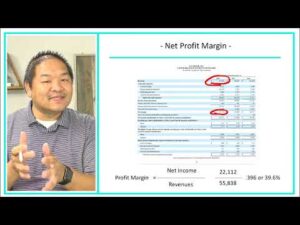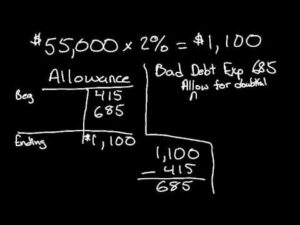Further guidance issued on tax treatment of PPP loan forgiveness
WASHINGTON – The U.S. Treasury Department and Internal Revenue Service (IRS) released guidance today clarifying the tax treatment of expenses where a Paycheck Protection Program (PPP) loan has not been forgiven by the end of the year the loan was received. The new Act, contains a new pool of roughly $284 billion for a second draw of the PPP. These funds, which are intended to help struggling small businesses across America, are an extension of the program created under the CARES Act in March of 2020. There are several changes from the original program, including changing who and how to qualify for the loans, as well as the total loan amounts that are offered to businesses.

Congress’s new Act directly addresses these concerns, stating that “no deduction shall be denied, no tax attribute shall be reduced, and no basis increase shall be denied, by reason of the exclusion from gross income” resulting from the forgiveness of indebtedness provided in the CARES Act. However, it is important to note that although this gross receipts threshold will be increased from $26 million to $27 million for taxable years beginning in 2022, the timing of the PPP forgiveness inclusion can cause some taxpayers to exceed the threshold. For California purposes, forgiven PPP loans, SVO grants, and RRF grants are excluded from gross income. On September 29, 2022, AB 158 was enacted to add an operative date of January 1, 2019 for the PPPEA to ensure taxpayers that had loans made during PPPEA would be eligible for the income exclusion and other applicable tax treatment.
Amending returns
For questions regarding the choices for recognition of the PPP loan forgiveness income, please contact your Cherry Bekaert tax advisor. In the case where a PPP loan was expected to be forgiven, and it is not, businesses will be able to deduct those expenses. Certain borrowers will find that the new Act has simplified obtaining forgiveness of their PPP Loans. The new Act allows 24 days after enactment for the SBA to create a one-page certification form for borrowers with a PPP Loan (new or old) less than $150,000.

This is a massive overriding of IRS guidance and significantly amplifies PPP Loan benefits for borrowers! So, consider the business that received a $100,000 PPP Loan, spent the entire amount on qualified expenses (like rent and payroll), and received forgiveness for the entire loan. There is $0 income tax on the $100,000, and the business can reduce its taxable income by deducting $100,000 spent on qualified PPP expense.
Misrepresentations discovered by the IRS
The guidance confirms that, when a taxpayer’s loan is forgiven based upon misrepresentations or omissions, the taxpayer is not eligible to exclude the forgiveness from income and must include in income the portion of the loan proceeds that were forgiven based upon misrepresentations or omissions. Taxpayers who inappropriately received forgiveness of their PPP loans are encouraged to take steps to come into compliance by, for example, filing amended returns that include forgiven loan proceed amounts in income. Another such inclusion https://kelleysbookkeeping.com/marketing-for-accountants/ is for certain return filing requirement thresholds for tax-exempt organizations under Sec. 6033. Under the new Emergency Coronavirus Relief Act of 2020 (Act), Congress clarified that (1) expenses paid for with PPP Loan proceeds are deductible, (2) PPP Loan forgiveness is not taxable, and (3) tax basis remains unaffected despite the resulting exclusion from gross income. Note that, similarly, the Act provides that Economic Injury Disaster Loans (EIDL) do not result in taxable income, and EIDL-paid expenses are deductible.
When guidance was finally released to resolve the confusion around this matter, many borrowers were past the point where they could return to their lender and request an increase in the loan. As with Round One PPP Loans, in order for Second Round PPP Loans to qualify for forgiveness, 60% of the total amount of the loan must be used for the payment of payroll expenses. Now, many borrowers will need to rethink their recent tax planning, which was based on the earlier, less helpful IRS guidance. Forms, publications, and all applications, such as your MyFTB account, cannot be translated using this Google™ translation application tool. The ARPA expanded the PPP to include certain nonprofit entities and certain internet publishing organizations. © 2023 KPMG LLP, a Delaware limited liability partnership and a member firm of the KPMG global organization of independent member firms affiliated with KPMG International Limited, a private English company limited by guarantee.
Further guidance issued on tax treatment of PPP loan forgiveness
In both cases, the IRS explained that the taxpayers could not deduct expenses funded with the PPP loans because there was a reasonable expectation of forgiveness. If the three conditions above are met, then under the PPP loan program the forgiven portion is excluded from income. If the conditions are not met, then the amount of the loan proceeds that were forgiven but do not meet the conditions must be included in income and any additional income tax must Further Guidance Issued On Tax Treatment Of Ppp Loan Forgiveness be paid. The IRS has had a change of heart and released three revenue procedures that give taxpayers more choices as to when they can recognize the tax-exempt income resulting from their forgiven Paycheck Protection Program (“PPP”) loans. In order to take advantage of the option to amend provided in this revenue procedure, amended partnership returns must be filed, and corresponding Schedules K-1 must be furnished, on or before December 31, 2021.

This results in neither a tax benefit nor tax harm since the taxpayer has not paid anything out of pocket. Under that legislation, as enacted, if the amount of PPP loan forgiveness exceeds $250,000, the increment above $250,000 must be included in income for Rhode Island tax purposes. Further, the Act states that for pass through entities that are S corps or partnerships, any amount excluded from income by the Act shall be treated as tax-exempt income and will receive a basis increase equal to the partner’s distributive share of deductions resulting from the costs giving rise to forgiveness in the CARES Act.
Emerging Companies Group: Guiding Fast-Growing Companies on Important Business Decisions
The tax-exempt income would provide owners with tax basis to recognize current year or suspended losses thereby reducing taxable income and tax liabilities. It would also provide tax basis to exclude distributions as taxable income and may even reduce the taxable gain on the sale of an entity. Cherry Bekaert LLP and Cherry Bekaert Advisory LLC practice in an alternative practice structure in accordance with the AICPA Code of Professional Conduct and applicable law, regulations and professional standards. Cherry Bekaert LLP is a licensed independent CPA firm that provides attest services to its clients, and Cherry Bekaert Advisory LLC and its subsidiary entities provide tax and business advisory services to their clients. Since businesses are not taxed on the proceeds of a forgiven PPP loan, the expenses are not deductible.
Biden’s Student Loan Forgiveness Could Be Taxable In Some States – Forbes
Biden’s Student Loan Forgiveness Could Be Taxable In Some States.
Posted: Mon, 29 Aug 2022 07:00:00 GMT [source]
If a business reasonably believes that a PPP loan will be forgiven in the future, expenses related to the loan are not deductible, whether the business has filed for forgiveness or not. Also, under that legislation, as enacted, the Division must waive interest and penalty on the portion of the forgiven PPP loan for 2020 that is taxed under the corporate income tax, the bank excise tax, and the personal income tax – provided that the tax on that portion is paid in full by the taxpayer on or before March 31, 2022. For more information on the recent guidance regarding the treatment of PPP loan forgiveness and how it can influence your tax planning, please reach out to Paul Gevertzman, Joseph Molloy or your Anchin Relationship Partner.
IRS Confirms Tax Treatment of PPP Loan Related Expenses Where Forgiveness is Expected
The PPP loan program was established by the Coronavirus Aid, Relief and Economic Security Act (CARES Act) to assist small US businesses that were adversely affected by the COVID-19 pandemic in paying certain expenses. The PPP loan program was further extended by the Economic Aid to Hard-Hit Small Businesses, Nonprofits and Venues Act. “This action underscores the Internal Revenue Service’s commitment to ensuring that all taxpayers are paying their fair share of taxes,” said IRS Commissioner Chuck Rettig. “We want to make sure that those who are abusing such programs are held accountable, and we will be considering all available treatment and penalty streams to address the abuses.” Frost Law is comprised of skilled tax attorneys, business attorneys, litigation attorneys, estates attorneys, Certified Public Accountants, Certified Financial Planners, and other tax professionals.We have been serving clients across the country and abroad. We have office locations on the East Coast in Maryland, Virginia, Washington, D.C., Pennsylvania, Florida, New York, and serve clients internationally.As cases do differ, past performance does not guarantee future results.
- These recipients received forgiveness of their PPP loan through misrepresentation or omission and either did not qualify to receive a PPP loan or misused the loan proceeds.
- For more information on the recent guidance regarding the treatment of PPP loan forgiveness and how it can influence your tax planning, please reach out to Paul Gevertzman, Joseph Molloy or your Anchin Relationship Partner.
- Now, you have a second opportunity to secure additional relief funds with clearer expectations on how to receive the funds and how to have those funds forgiven.
- They ensure every topic is thoroughly researched and meticulously broken down so you receive the most up to date and accurate information available.
- The business applied for forgiveness of its PPP loan in 2020 as if it was qualified for loan forgiveness.
- The PPP loan program was established by the Coronavirus Aid, Relief and Economic Security Act (CARES Act) to assist small US businesses that were adversely affected by the COVID-19 pandemic in paying certain expenses.
- © 2023 KPMG LLP, a Delaware limited liability partnership and a member firm of the KPMG global organization of independent member firms affiliated with KPMG International Limited, a private English company limited by guarantee.
If your forgiven loan relates to an RRF, you are not required to meet these qualifications to deduct expenses. If your forgiven loan relates to an EIDL Grant or Targeted EIDL Advance, you are not required to meet these qualifications to deduct expenses. Additionally, note that some borrowers returned all, or part of their First Round PPP Loans based on early SBA guidance.
To qualify for expense deductions, basis adjustments, and lack of reduction of tax attributes related to an SOV grant under SB 113, you must meet the following qualifications. On June 30, 2022, AB 194 was enacted which allowed an income exclusion for covered loan amounts forgiven pursuant to the Paycheck Protection Program Extension Act of 2021 (PPPEA)(Public Law 117-6). The PPPEA was enacted on March 30, 2021 and extended the covered period of the PPP from March 31, 2021, through June 30, 2021.
- WASHINGTON — The Internal Revenue Service recently issued guidance addressing improper forgiveness of a Paycheck Protection Program loan (PPP loan)PDF.
- If a taxpayer meets the conditions above, the taxpayer may exclude the forgiven amount of the PPP loan from income.
- “This action underscores the Internal Revenue Service’s commitment to ensuring that all taxpayers are paying their fair share of taxes,” said IRS Commissioner Chuck Rettig.
- We cannot guarantee the accuracy of this translation and shall not be liable for any inaccurate information or changes in the page layout resulting from the translation application tool.
- These funds, which are intended to help struggling small businesses across America, are an extension of the program created under the CARES Act in March of 2020.


